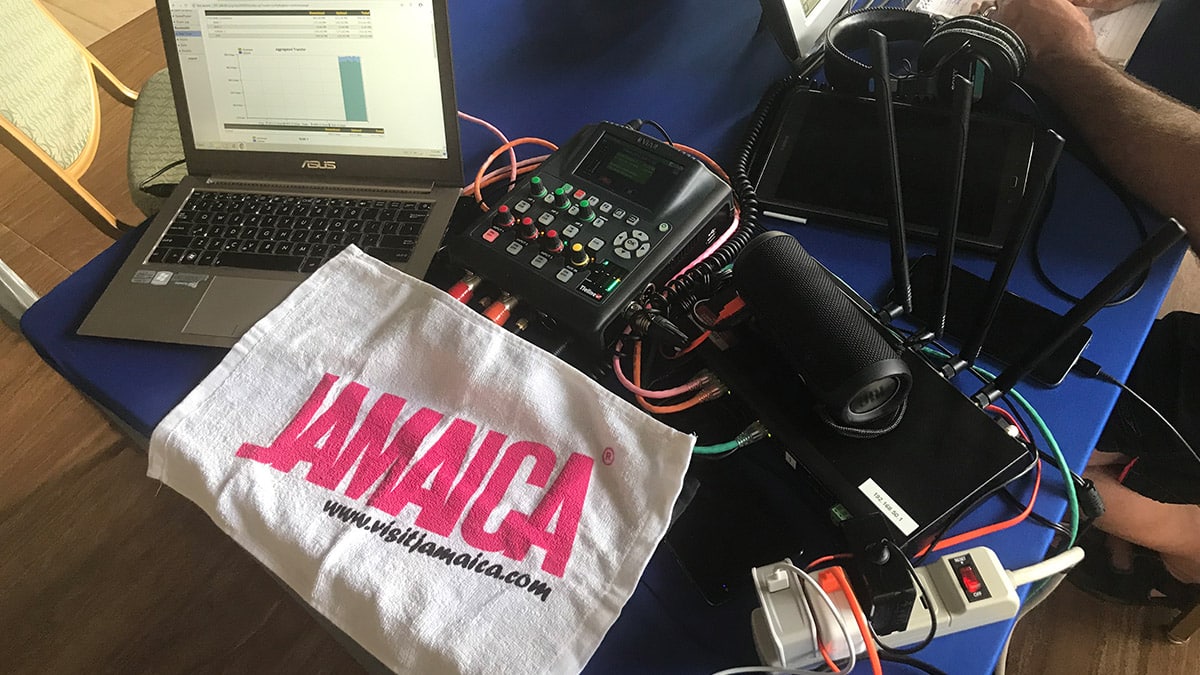CALGARY, Alberta — When Corus Entertainment’s radio stations at Shaw Court experienced an electrical explosion and fire in 2012, the fire suppression systems doused the studios with water, causing catastrophic damage. Refitting studios was a daunting challenge and an incredibly stressful time. Initially, we found building space in downtown Calgary and broadcast remotely for nine weeks using Tieline ISDN codecs from makeshift control rooms. We constructed temporary studios during this time and worked from there for three years, while fitting out new permanent studios at the Corus Centre.
Networking Programming
We have point-to-point connections for our stations that share formats and show hosts. A number of simulcast programs are accomplished this way using Genie Distribution codecs. Tieline Bridge-IT codecs are employed as secondary and tertiary connections to main, backup and repeater transmitter sites and as communication links between markets.
In Calgary, we currently have a mixed bag of Tieline Merlin, Genie and Commander codecs, and we plan to add a Gateway to our Toronto studios. We have a national Genie Distribution network set up in Toronto to distribute syndicated programming to all Corus radio sites. This replaced our previous satellite distribution network. Corus also uses the Report-IT application for live news and special programming. Several commercial remotes are also performed with Report-IT using the FTP functionality to record and upload into our Burli system for playout — we call this “As Good as Live.”
For on-location live remote shows, we use Tieline ViA codecs exclusively. These take place locally, nationally and internationally. Using IP considerably increases the number of places from which we can broadcast, and decreases the lead time required to plan remote broadcasts, especially when compared to traditional ISDN and POTS line installs.
Remotes are usually three hours, and up to 12 hours for special programming such as Radiothons. We use Tieline’s WheatNet-IP-enabled Genie and Merlin codecs at the studio and feed mix-minus integrated IFB from our Wheatstone system to remote sites.
We have approximately 26 ViA codecs across the country and use the USB, digital and analog interfaces to connect all types of audio equipment, including laptops, digital recorders, pool audio feeds, TV feeds and PA output feeds. ViAs are primarily for remote live show broadcasting and several are currently with announcers for broadcasting from home.
Remote Connection
Having enough equipment is always the challenge. Several ViA codecs are used by show hosts at home and we can feed local computer audio and simultaneously record off-line audio for later playout.
Our remote ViAs connect to studio Merlin codecs through our Peplink/Pepwave VPN system to ensure reliability and security. For the most part, we use our Peplink/Pepwave bonded cellular system for connections from remote ViAs to our studio Merlins. If hardwired internet or WiFi connections are available, we also program those into Pepwave for bandwidth aggregation.
Tieline Music PLUS encoding at 96 kbps sounds best on voice, while conserving data usage. Our cellular networks are very good and combined with Peplink/Pepwave data bonding, the connections are excellent. We generally see latency in the 80–200 ms range using auto jitter buffer with the “Best Compromise” setting. Electrical power is usually provided on location, but the internal battery is useful as a UPS backup for the VIA.
Performance
The ViA codec’s performance is excellent and it is an “All in One” solution that dramatically decreases setup time. It is easy to use and has all required audio functions built into the unit. Feedback we get is: “Wow, that little box can do a lot!”
The codecs are very reliable and the quality of the connections is excellent. The touchscreen is intuitive to operate and we use the Matrix Editor to configure monitor mixes, routing, PA splits and communication.
Web-GUI monitoring and control is not essential, but we have used Toolbox software and tested the Cloud Codec Controller at several locations.
I believe announcers will work from home more in the future, and radio studio facilities will shrink in step with that. The one thing the pandemic is teaching us is that we can successfully produce shows with people working from home. The upside is that on-air teams can work pretty much from anywhere.
Announcers don’t even need to live in the same city as the radio station. At this point, more robust remote control and communication will be required.
The author is manager of Radio Technology for Corus Entertainment Inc. in the western region of Vancouver, Edmonton, Calgary and Winnipeg.

